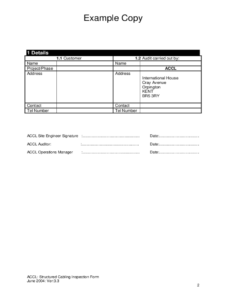Creating a system requirements checklist template is a crucial step in ensuring that your software or application runs smoothly on target systems. By documenting the necessary hardware, software, and environmental specifications, you can increase the chances of successful deployment and minimize compatibility issues. A well-structured checklist ensures a thorough evaluation of system capabilities and helps identify potential roadblocks before they become costly problems.
A comprehensive system requirements checklist template should cover various aspects of the system, including operating system compatibility, hardware specifications, software dependencies, network requirements, and environmental factors. It helps streamline the installation and deployment process, allowing IT teams to quickly assess system readiness and perform necessary adjustments.
System Hardware Requirements
Hardware requirements define the minimum and recommended system specifications necessary for running the software or application. This includes essential components such as the processor, memory (RAM), storage space, graphics card, and network adapter. By specifying these requirements, you can ensure that the target system has sufficient resources to handle the application’s performance demands and provide a seamless user experience.
When defining hardware requirements, consider both minimum and recommended specifications. Minimum requirements represent the lowest acceptable configuration for basic functionality, while recommended specifications provide optimal performance and a better user experience. By providing both levels of specifications, you can accommodate a wider range of systems and cater to varying performance needs.
Additionally, include details about specific hardware components that may be required for specialized functionality. For example, if the application requires high-resolution graphics rendering, specify the minimum graphics card requirements. Clearly stating these dependencies helps users make informed decisions about hardware upgrades or system compatibility.
Finally, consider future hardware advancements and technological changes. While specifying precise hardware requirements is essential, leaving some flexibility in the checklist allows for compatibility with newer hardware releases and future system upgrades.
System Software Requirements
Software requirements outline the necessary operating system, software libraries, and application dependencies. Clearly stating the required operating system version and its compatibility with the application ensures that the target system meets the necessary software environment. Additionally, list any required software libraries or frameworks that the application relies upon.
When specifying software requirements, include both the minimum and recommended versions. This approach accommodates systems running different software versions and helps users determine if they need to upgrade their software before installing the application. You can also provide a link to the software vendor’s website for users to download and install the required software components.
Consider including optional software requirements that enhance the application’s functionality or provide additional features. By clearly distinguishing between essential and optional requirements, users can make informed choices based on their specific needs and preferences.
Regularly reviewing and updating the software requirements section is crucial. As software updates and new dependencies emerge, maintaining an up-to-date checklist ensures continued application compatibility and functionality.
Conclusion
A comprehensive system requirements checklist template is an invaluable tool for ensuring software compatibility and successful deployment. By providing detailed hardware and software specifications, you empower users to assess system capabilities and make informed decisions about necessary upgrades or adjustments.
Regularly reviewing and refining the checklist template based on software updates and technological advancements is essential to maintain its relevance and accuracy. This proactive approach minimizes compatibility issues, enhances user experience, and ensures the smooth operation of your software or application on a wide range of systems.

